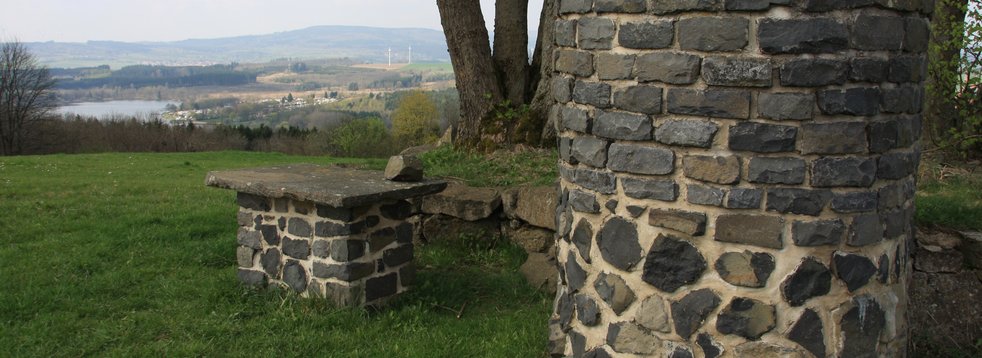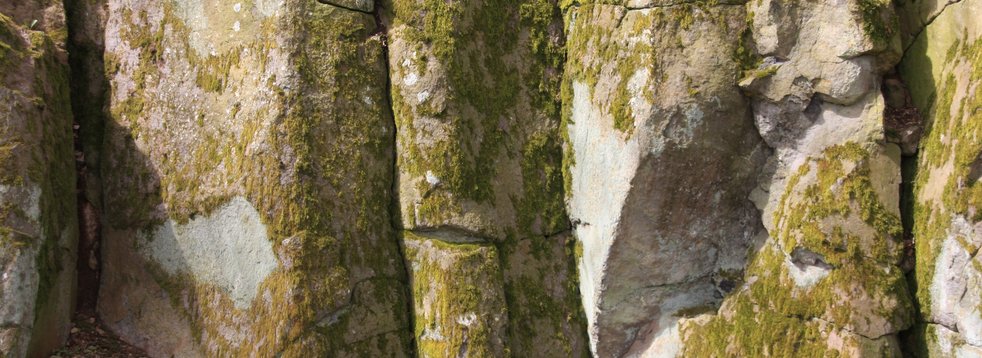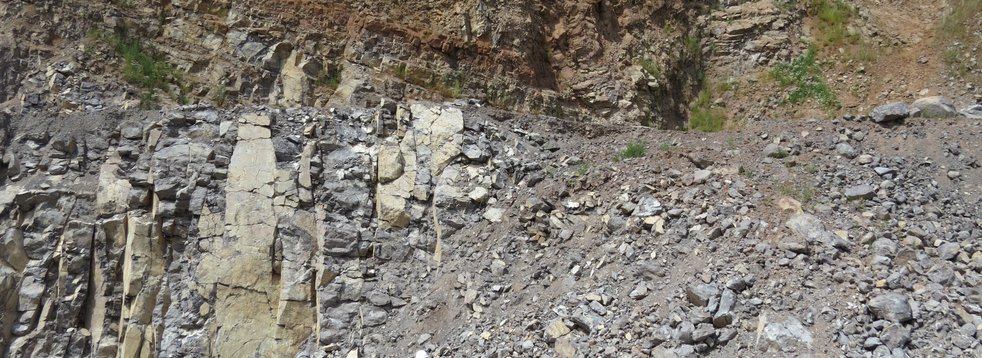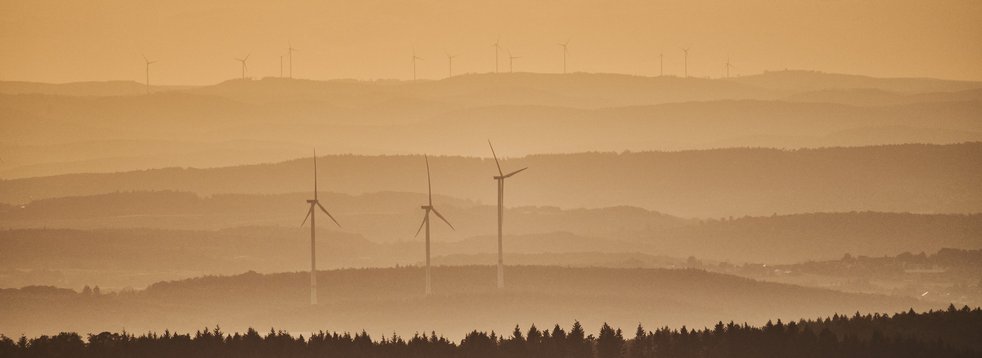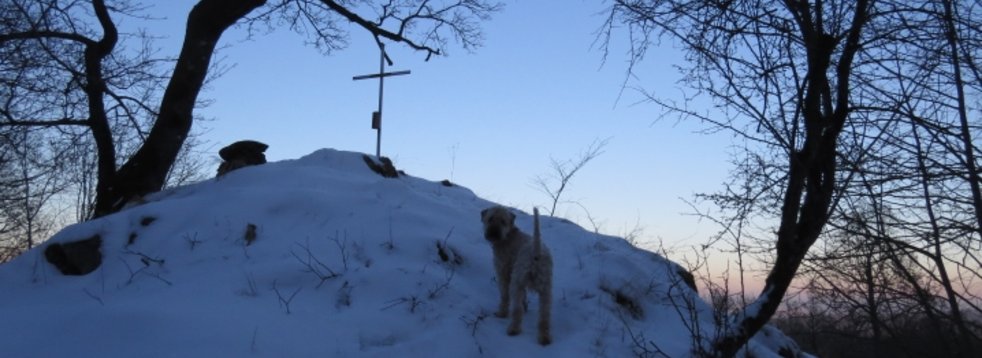Basalt
The Vogelsberg lies in the middle of the European continental plate, which is the origin of the name intra-plate volcano. The Vogelsberg shows a variety of rocks, which are characteristic for this kind of volcanism and can be observed at different places in the world. In addition, the forces of weathering created special deposits that shaped the region.
Basalt in the Vogelsberg and Hesse -
Although basalt is omnipresent in the Vogelsberg, this rock from deep down can also be found in other regions of Hesse. The Hessian State Agency for Nature Conservation, Environment and Geology (HLNUG) has produced a map (see on the right).
What is basalt?
The Vogelsberg volcanic region is known for its extensive distribution of basalt and related rocks. But what is this anyway?
Basalt is initially a dark rock, which is transported to the earth's surface by volcanic activity. Like a soup, which consists of different components of different sizes, each rock also has different "ingredients". These are called minerals. "The minerals in the rock are the salt in the soup." Even if this comparison is somewhat inaccurate, it shows that a rock is formed by the minerals it contains.
Where are the minerals in basalt?
At first glance, no minerals can be seen in basalt. However, if the rock is cut into very thin slices and placed under a microscope, a whole new angle of view suddenly opens. In this way, basalts can be identified and differentiated. The interplay of different minerals determines the type of basalt - like soup: a little more of an ingredient and the taste, appearance or consistency changes.
The former lava flows can now be identified as elongated ridges in many places. The basalt was mined in quarries and served as building material for the region. Former volcanic channels, in which magma reached the surface of the earth (vents) and later cooled down, are now hilltops that shape the landscape.
Typical basalt: columns.
When basaltic lava cools, it loses volume. This causes tensions within the rock. These are reduced by the formation of cracks, which ultimately leads to the formation of columns. The typical 5-6 angular shape is probably the expression of the thermodynamic equilibrium. This often reticular or cellular shape can be observed everywhere in nature. When a lava flow cools, the ground and the air are colder, so that the cooling takes place from below and above. If the cooling continues, columns or columnar structures gradually form. Thus, the ends of the columns point in each case to the former cooling direction: in a lava flow in the direction of the cooler lower and upper side.
If the magma cools down in a conveying vent, the cooling takes place from the sides and above: This means that there is a common centre from which the columns are arranged radiating outwards. Because of the similarity to the orientation of the wood in a charcoal pile, this arrangement of the columns is called a "Meilerstellung". Basalt columns always cool down perpendicular to the cooling direction. Their arrangement as milestones indicates that there was a vent here. A beautiful example of basalt columns can be seen on the east wall of the Amoeneburg.
Tuff
Volcanic deposits and rocks crucially depend on how they reach the earth's surface and what type of volcanic activity was predominant. During explosive eruptions, fragments of different sizes are thrown through the air (pyroclastics). If these fall to the ground, pyroclastic deposits (tephra) and rocks form.
Depending on the particle size, these pyroclastic deposits are called differently. If, for example, the particles are smaller than 2 millimetres, they are volcanic ash. If this deposit consists of more than 75 % ash and is solidified, it is called tuff.
Tuff in the Vogelsberg
The Vogelsberg consists of an alternating sequence of basalt and tephra, i.e. pyroclastic deposits. These are no longer present on the surface due to removal and transport (erosion). Only under the protective basalt these volcanic sediments remained. They play a central role in the water balance of the region.




